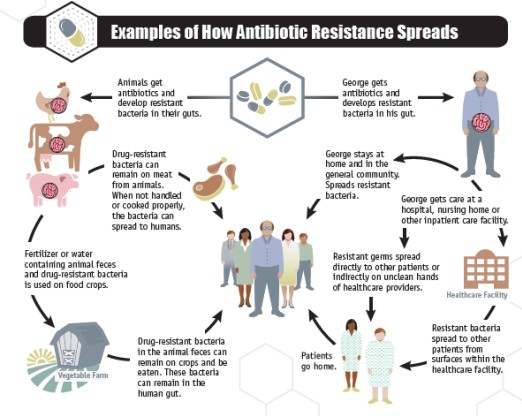5585 Guilford Road • Madison, WI 53711-5801 • 608-273-8080 • Fax 608-273-2021
www.agronomy.org
Twitter | Facebook
NEWS RELEASE
Contact: Hanna Jeske, Associate Director of Marketing and Brand Strategy, 608-268-3972, hjeske@sciencesocieties.org
Journal publishes special section on antibiotics in agroecosystems
March 3, 2016 – The World Health Organization has identified antibiotic resistance as a serious threat to human health across the world. The Journal of Environmental Quality (JEQ) recently published a special section titled “Antibiotics in Agroecosystems” to address the science of this important topic.
“Overuse of antibiotics in medicine and agriculture is known to foster the emergence of germs that are resistant to drugs,” says Ed Gregorich, editor of JEQ. “The widespread use of large quantities of antibiotics in agricultural production and the application of animal waste has introduced antibiotic-resistant contamination to the wider environment via different pathways. This special collection presents the state of science for evaluating antibiotic resistance in agroecosystems.” Gregorich is a research scientist with Agriculture & Agri-Food in Ottawa, Canada.
 “The presence of antibiotic drug residues, antibiotic resistant bacteria, and antibiotic resistance genes in agroecosystems is a growing public concern,” says Robert Dungan, editor of the special section. “While antibiotics are a valuable tool for fighting infections, the emergence of drug-resistant bacteria is a threat to human, animal, and ecological health. To address this issue, standard research methods and practices are needed to understand the spread of antibiotic resistance within and beyond agroecosystems.”
“The presence of antibiotic drug residues, antibiotic resistant bacteria, and antibiotic resistance genes in agroecosystems is a growing public concern,” says Robert Dungan, editor of the special section. “While antibiotics are a valuable tool for fighting infections, the emergence of drug-resistant bacteria is a threat to human, animal, and ecological health. To address this issue, standard research methods and practices are needed to understand the spread of antibiotic resistance within and beyond agroecosystems.”
“The concern is not over direct ingestion of antibiotic residues, but how residues in the environment lead to the development of antibiotic resistant bacteria,” continues Dungan. “The resistant pathogens can then potentially make their way to humans and the clinical environment.” Figure 1 explains the spread of antibiotic resistance.
According to Rod Venterea, communications editor for JEQ, “Antibiotic resistant bacteria also threaten the health of animals and ecosystems. While agricultural production systems are a potential source of both antibiotics and antibiotic resistant organisms, the impact of agriculture on this problem is not fully known. This special section describes the current state of knowledge and what types of research are needed to better understand the spread of antibiotic resistance associated with agroecosystems.”
JEQ is a publication of the American Society of Agronomy, Crop Science Society of America, and Soil Science Society of America.
To read the introduction to the special section (open access), visit https://dl.sciencesocieties.org/publications/jeq/articles/45/2/377.
Journal of Environmental Quality publishes original research, reviews and analyses, and environmental issue articles that address anthropogenic impacts on water, soil, and the atmosphere and pertain to some aspect of environmental quality in natural and agricultural ecosystems.